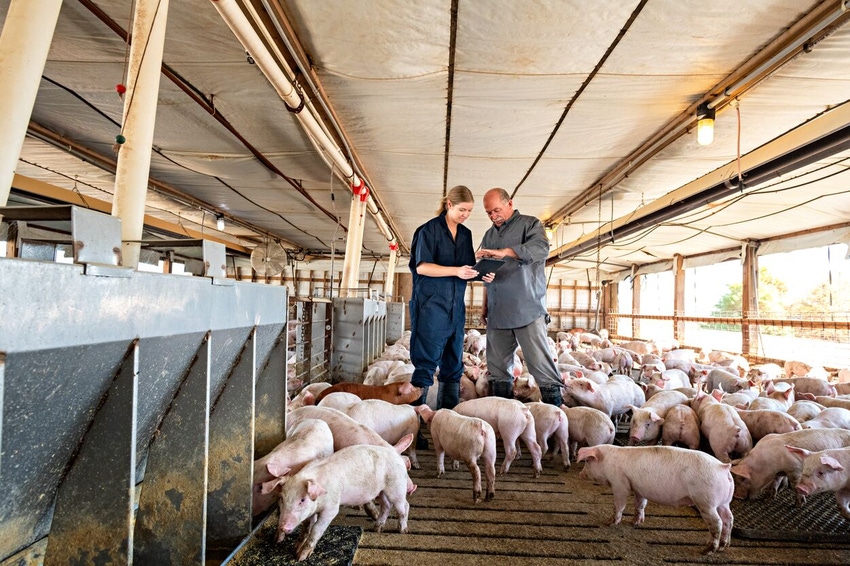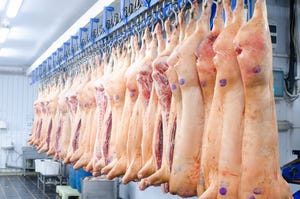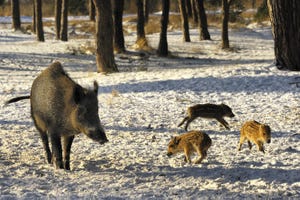Rising costs in pork production
Where are we and what comes next?
October 25, 2023

By Isabella Rivera, SwineTech
As many farms and businesses within pork begin their fourth quarter, producers looking back on 2023 have plenty to grapple with. Between legislative changes coming down the pipe, continuing conversations about sustainability in agriculture, and rising food and fuel costs, it can be difficult for a producer and those concerned with pork production to sort through the noise and determine next steps to take for their operations.
By taking a look at key economic indicators and evaluating how they can respond, however, producers can find the areas where they can eliminate inefficiencies and create a high-quality product despite the challenges facing the industry.
A chief problem in pork production over the past several years, and one that has been felt by countless producers, is rising input costs for facilities. Research from Kansas State University demonstrates that, from January 2020 to April 2022, corn prices increased 79%, soybean prices increased 42%, gasoline prices rose 48%, and refrigerated trucking rates rose 50%. This process that has only continued in 2023 has led to, as described by livestock economist Lee Schulz of Iowa State University, nearly a $21 per head loss for the economic year.
Furthermore, a byproduct of these rising costs for the market has been a lower average hog weight. Although also a result of losses from disease in main production states, the average dressed weight of a hog at 217.4 pounds, as recorded by the USDA in the first several weeks of 2023 is lower than in 2022 and is doing little to reduce “record high” meat prices. This considered, it is an unfortunate reality that many pork operations have lost money throughout 2023 despite the current high cost of pork, which, naturally, has made their operations that much more difficult moving forward.
Compounding all of these factors, pork continues to struggle with labor constraints, both in the sense of finding farm workers and finding workers with expertise in the field who understand how to manage livestock efficiently and cost-effectively.
A reason why access to labor and talent is becoming an ongoing challenge is that more individuals are leaving rural areas and there is a low unemployment rate. As a result, employers are struggling to find qualified candidates due to a lack of available workers. This issue is further complicated by quickly declining employee tenures - according to Bersin by Deloitte, 54% of employees leave within two years and 70% within four years.
Additionally, data from due to Deloitte Insights shows that 55% of new hires are considered bad hires not having the right skills or aptitudes after six months on the job. The impact of these labor trends is significant for swine production operations as staffing shortages can lead to lower efficiency levels and increased costs.
Pork producers are also being impacted by the shrinking in size and population of rural communities across the world, as many of their younger generations move away to cities or other countries to seek out greater opportunities, leading to a lack of future generations able to work and sustain these communities. This problem is further compounded by older generations aging and leaving these communities with nobody to take their place once they are gone. This leads to a decline in economic activity, investment and services in rural areas, ultimately making them unable to thrive without finding solutions for this demographic crisis.
The National Pork Board 2016-2017 “Employee Compensation & HR Practices in Pork Production” report shows the average reported turnover rate for animal caretakers on large and small to midsize producers was 35.03% and 20.34%, respectively. This is a very costly problem for producers.
This high turnover rate also is resulting in an annual loss of information and a lack of skilled employees.
So then, with this in mind, what can producers expect for the future?
Looking forward, Schulz is hoping to see high corn and soybean yields later this year to help rein in such extreme input costs, but an intersecting factor that may keep feed costs high for pork producers is the rising demand for renewable fuel, especially diesel and biodiesel. He does, however, also comment that, while not as high as demand in previous years (potentially due to a lack of stimulus check programs present during the beginning of the pandemic), pork demand is performing well in the context of expectations for pre-pandemic sales—and increasing demand further still in the long run may be the economic key to hauling producers out of the hole of input costs.
Analyzing data and nutrition: Next steps for producers
Considering expectations for the long haul is certainly worthwhile, but what can producers do now to get a handle on the tough margins they’re working with?
Understanding how an operation can improve begins with a comprehensive evaluation of the systems it already has in place. The field of data science and analysis has been on the rise in recent years and is expected to continue its expansion with companies who want to understand all of the nuances of their performance, and there’s no reason this strategy can’t have a place on farms.
Particularly with programs that exist to provide structure to producers seeking to track information about the pigs they are managing, being able to first identify and then plan to eliminate areas of inefficiency in a facility can streamline an operation and make sure all hands are directed toward the areas in which they have the most impact. For instance, by paying attention to small factors like maintaining a careful 40-50% feed-pan coverage, producers can still encourage pig growth while limiting waste of what’s quickly becoming a precious commodity.
Moreover, data science and careful tracking of factors associated with swine health, such as food and water intake, laying patterns, and sow attentiveness to piglets, can also help farmers come out ahead by improving overall animal welfare within a facility. Research has demonstrated the economic benefits of a healthier animal, such as better reproduction rates and improved meat quality, and those advantages are something to consider as factors, unlike economic ones, that are under a farmer’s control.
Looking outside of just the facilities farmers directly manage, Pork Checkoff with Kansas State University swine nutritionist Joel DeRouchey also encourage producers to work with their ingredient suppliers to see what rates of distiller dried grains with solubles prove to be the most profitable for their facilities. Although this element of production can be quite variable, it may also be possible for farmers to find better DDGS prices with private brokers or by buying from plants themselves.
Furthermore, farms can work with genetic suppliers to review feed formulas and ensure that they’re economical—and actually suited for the pigs being raised n a certain facility instead of as a catch-all for general performance.
Undeniably, the past several years have created some rough seas for the pork industry. However, those behind the industry’s production are more than capable of powering through, especially with the right tools and techniques. A quantitative approach that comprehensively considers the data and science behind a farm’s everyday operations is, certainly, something that takes time, but if there has ever been a moment to understand the ins and outs of a facility’s daily routines and the factors that drive financial success, now is it.
You May Also Like



